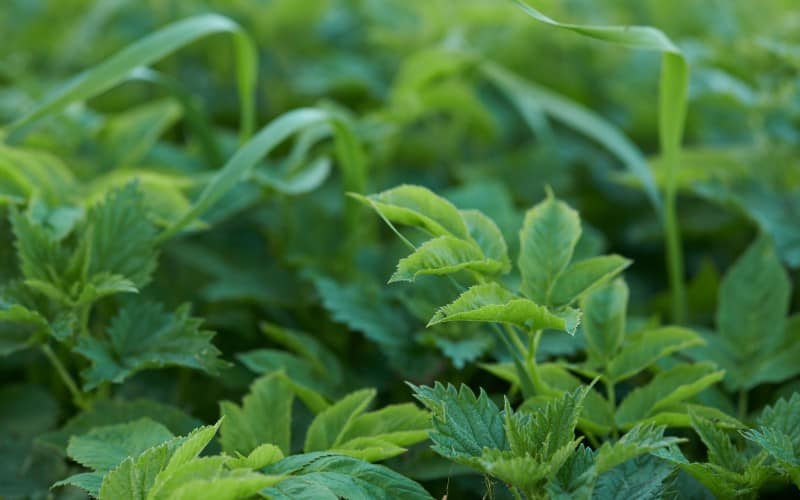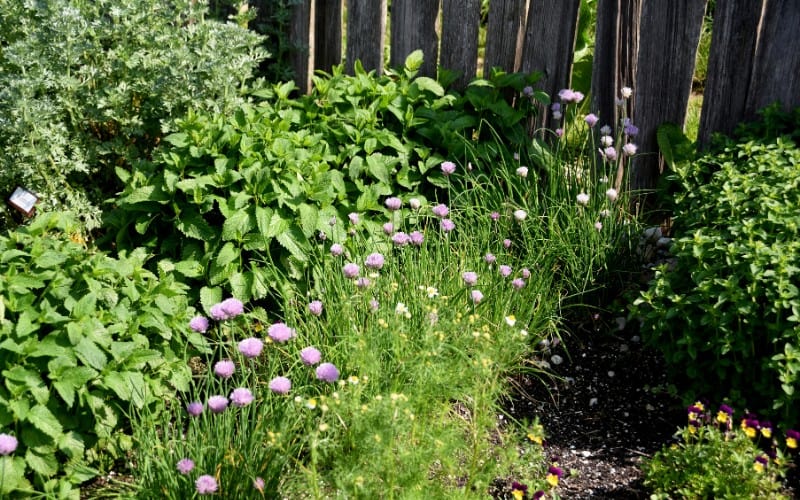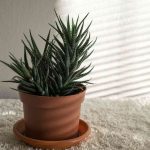Planting herbs serves two purposes for you in your garden. First, you have something that you can use to spice up your cooking. Second, you add a fresh color to your garden.
One thing that every gardener knows is that the space in a garden is quite limited. So, as a gardener, you have to find a way to maximize the little space available.
One of the ways to maximize this space is by planting herbs together. Luckily, some herbs do well when you grow them together. But how close can you plant herbs together in your garden? That is precisely what we'll be looking at in this post.
Let's get started!
Table of Contents
What to Consider When Planting Herbs Together
Height of Herbs
Since most herbs start in a pot before they are transplanted, it is vital you put the height of the herbs you intend planting together nearby into consideration.
If you plant tall herbs together, the top will become more massive than the bottom, causing the pot to tip over. For any tall herb, you put in a pot, add a trailing one to balance the weight on the pot.
Water Needs
Another thing to consider when choosing herbs to plant together is water requirements. All herbs love the sunshine, but not all of them love water quite as much. So, you have to select herbs that have similar water requirements.
Why? If you mix a herb that loves water with one that doesn’t. You lose one of the plants. If you add enough water, you will drown the one that does not like water. Not just that, wet roots may lead to your roots rooting. This would weaken the herb and also make them prone to diseases.
If you do not add enough water, you starve the one that loves water. Thyme, sage, and rosemary like their soil dry, while parsley and basil love some wetness.
Sunshine
A lot of herbs need full sun for them to grow. Plant them in locations where they can get the sun in the afternoon and shade in the evening. Most herbs need to be in the sun for four hours on average.
Some herbs, like rosemary, sage, thyme, and basil, need at least four to six hours of sun daily. This makes them relatively easy to cultivate.
- Read Also: Citronella Plant vs Lemongrass
Plant the Herbs on A Soil That Does Not Have Too Many Nutrients
Ever heard the saying, “too much of everything is bad?” That also applies to herbs. The herbs do not actually need a lot of nutrients. The herbs have to be grown lean. You do not need to overload the soil with fertilizers for the plants to use.
This will do nothing more than dampen the flavor or the strong natural scent of the herbs. Herbs do not need too many fertilizers. You can only overload the soil if the reason why you are cultivating the herb is because of the flowers. Flowers require a lot of nutrients and water.
How Close Can You Plant Herbs Together?
How close can you plant herbs together? This question does not have a definite answer. There is no one for all solution. Some herbs require more space than others.
Here, we would list some herbs and specify how close you can plant them.
Basil
Usually, when planting basil, you give them a spacing of ten to twelve inches, but you can plant them five to six inches apart, and they would grow and flourish just fine.
Rosemary, Oregano, Marjoram, Sage, and Mints
For Rosemary herb, Oregano, Marjoram, Sage, and Mints, you should give them a three-foot spacing. However, care should be taken when planting mints.
This is because they have an uncanny way of growing beyond their boundary. They can creep and overtake other plants in the bed.
Thyme, Savory, and Tarragon
Thyme, savory, and tarragon are healthy plants. You can give them a spacing of two feet.
Parsley
Parsley has small seeds and is generally a tiny plant, so they should be planted one to two inches apart. The rows of parsley can be six to twelve inches apart. You can mass plant parsley in a small cut-out area too, and it will grow just fine.
Read Also: Names of Flowers A to Z
Conclusion
Planting herbs can be an exciting experience, one that every gardener enjoys. But care has to be taken in the proximity of plants. How close can you plant herbs together?
This question is crucial as it informs you of what to do to avoid overcrowding. This will then lead to the plants being malnourished and then dying off.
Remember, whatever you do, do not plant mints in close proximity to another plant. They are creeping plants, and they will overrun the whole place and stifle other plants.






